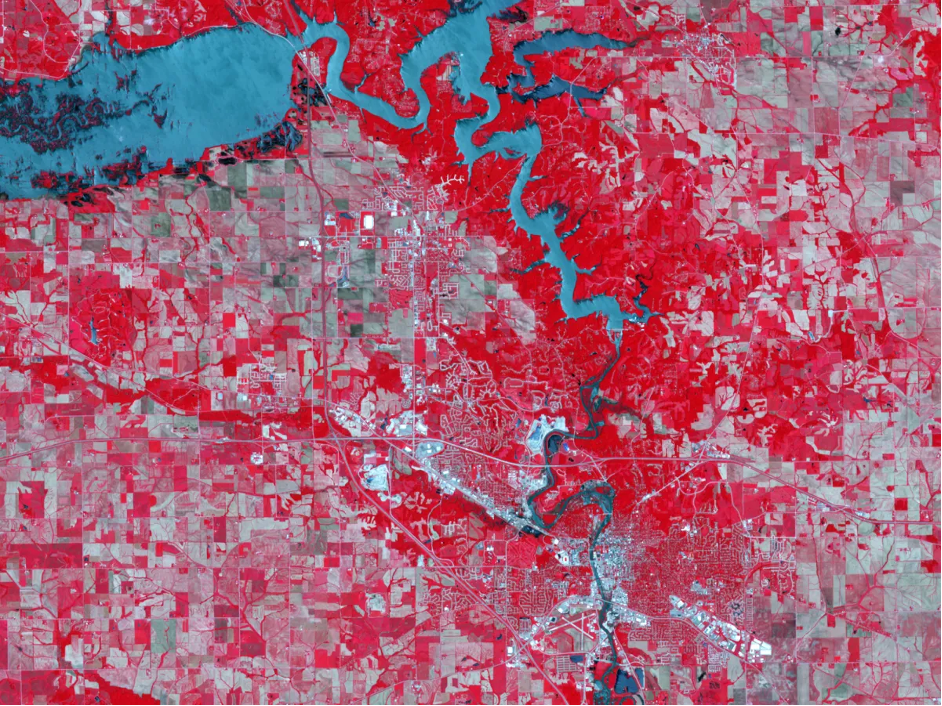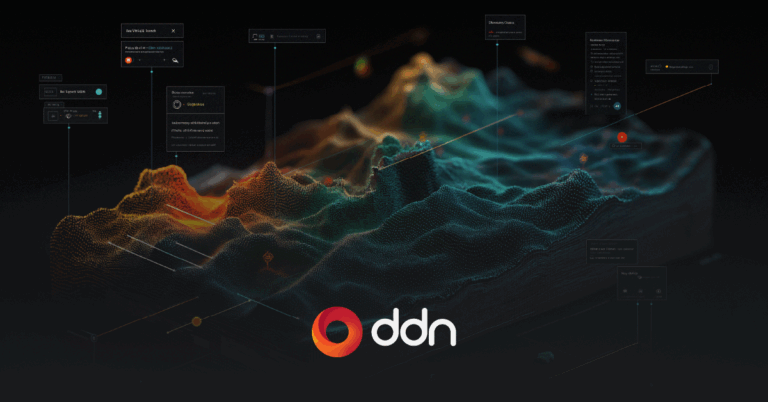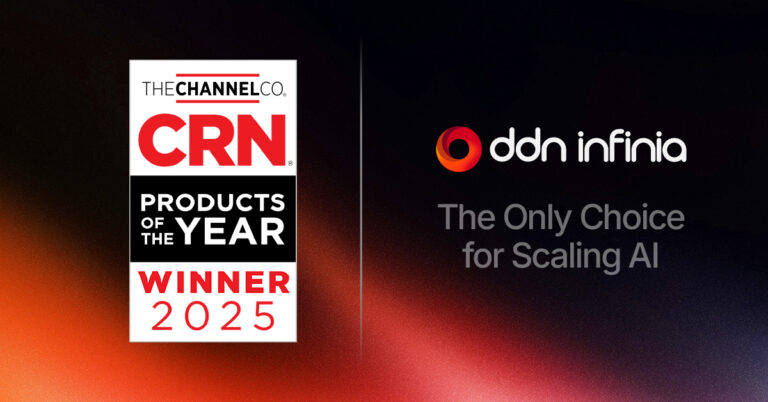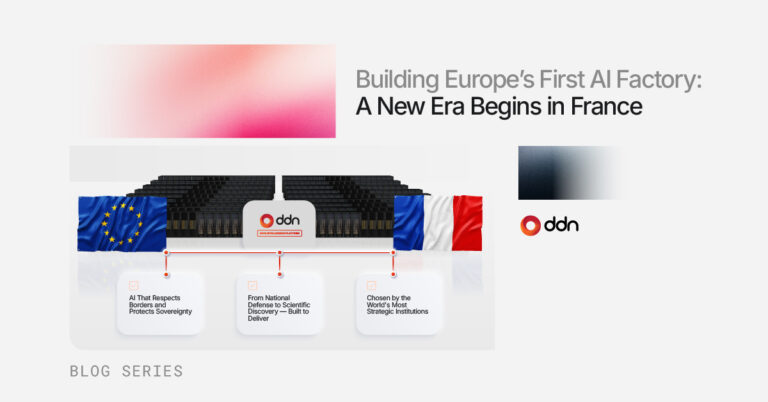AI Factories in Europe
The idea behind European AI Factories is simple: bring together data, compute, tools, and expertise in one open, collaborative environment so research outcomes can turn into trusted AI services faster.
AI Factories are designed as open and collaborative innovation hubs. They make large and complex datasets available, connect them with powerful computing infrastructures. This approach shortens the path from scientific excellence to industrial impact, enabling AI systems that are reliable, scalable, and aligned with European values.

DaFab: A Functional Prototype for Earth Observation
The DaFab project represents a concrete step toward this vision. Focused on Earth Observation (EO) data from the Copernicus program, DaFab demonstrates how potential essential components of an AI Factory can be assembled and validated in practice. At its midterm stage, the project has already shown significant progress in building an integrated infrastructure that links data, cloud, and high-performance computing (HPC), while also delivering early applications and services.
More than a technical endeavor, DaFab fosters community involvement. A Scientific Advisory Board brings together expertise in AI, EO, and HPC, while open-source software, public workshops, hackathons, and summer schools ensure the project’s outputs are reusable and widely adopted.
Core Infrastructure: Data, Cloud, and HPC
The future of AI Factories in Europe depends on three interconnected pillars: Data infrastructures for interoperability, Cloud platforms for flexibility, and HPC for large-scale processing. DaFab actively demonstrates how these pillars can be combined into a single operational ecosystem.
1. Data Infrastructure
DaFab introduces a Unified Metadata Catalog, merging original Copernicus datasets with AI-generated metadata. Built on RUCIO and using the STAC standard, this system supports FAIR principles (Findable, Accessible, Interoperable, Reusable). Through integration with DASI, users gain high-performance access to Europe’s growing EO archives.
The system is enriched with AI-generated metadata—such as field delineation and flood mapping—making data directly usable for downstream AI services.
2. Cloud-native Platforms
DaFab deploys cloud-native AI pipelines using Argo and Kubernetes, enabling flexible and scalable execution across distributed resources. Pilot services for smart agriculture and water monitoring have already been validated in these environments, showing how advanced AI can be applied to real-world challenges.
3. High-Performance Computing
At the HPC layer, DaFab bridges AI and supercomputing through Slurm-based integration using its HPK connectors. This allows seamless workload distribution between cloud and HPC environments. Pilot use cases are being migrated to MeluXina, Luxembourg’s EuroHPC supercomputer, showcasing the benefits of large-scale AI training and inference. Energy efficiency is also a focus, with methodologies developed to evaluate GPU performance and optimize time-to-solution.
Validated Use Cases: From Pilots to Impact
Smart Agriculture
DaFab applies modern deep learning – CNNs and Transformer-based models—to Sentinel-2 imagery for semantic segmentation of crop fields. These models distinguish cultivated land from natural areas, supporting precise yield monitoring and sustainable farming.
Training is executed on GPU-equipped HPC clusters, while inference is deployed via the cloud. Outputs like parcel boundaries are stored in the Unified Catalog, enabling direct EO data queries for agriculture stakeholders.

Water Monitoring
In water monitoring, DaFab combines convolutional and recurrent neural networks with attention mechanisms to detect anomalies and monitor water extent over time. This is especially useful for early flood detection and disaster response.
Cloud–HPC integration is critical here: training occurs on MeluXina, while inference is run in the cloud, ensuring near-real-time results. This hybrid setup combines computational power with operational agility.
These pilots exemplify DaFab’s capability to tackle Earth Observation challenges at continental scale while delivering tangible societal and economic benefits.

Preparing the Ground for Europe’s AI Factories
By addressing the full stack—from infrastructure to metadata, from pilots to training—DaFab is laying the groundwork for Europe’s AI Factories. The project proves that it is possible to federate Cloud, Data, and HPC into a single operational framework, while adhering to open standards and FAIR principles. It also shows the importance of coupling technical development with community engagement, ensuring that innovation ecosystems are inclusive and sustainable.
Importantly, DaFab is already creating value for private companies and commercial stakeholders. Businesses in agriculture and insurance are beginning to test how the system can help optimize their operations. For example, agritech companies can use DaFab’s AI-driven parcel delineation and crop monitoring pipelines to improve yield forecasts, guide resource allocation, and enhance sustainability reporting. In the insurance sector, water anomaly detection and flood extent mapping provide actionable insights for risk modeling, claims validation, and climate resilience planning. By reducing the complexity of accessing and processing Copernicus data, DaFab lowers the barrier for private firms to incorporate advanced AI-driven Earth Observation analytics into their business models.
The system also opens opportunities for data services providers and startups. Cloud-native deployment of DaFab workflows allows small and medium enterprises (SMEs) to build tailored services on top of the infrastructure without needing to invest in large-scale HPC resources themselves. For instance, startups focused on precision farming or renewable energy forecasting can access enriched metadata and ready-to-use models, accelerating their time to market. This creates a vibrant ecosystem where public investment in supercomputing and data infrastructures directly stimulates private innovation.
Another aspect of DaFab’s impact lies in standardization and interoperability. By adopting open formats like STAC and integrating FAIR principles, the project ensures that data and AI models developed within its framework are not locked into proprietary silos. This approach facilitates cross-industry adoption, allowing both research institutions and commercial players to build interoperable solutions. Such interoperability is critical to scaling AI Factories across Europe, ensuring that diverse stakeholders—from SMEs to large enterprises—can collaborate and benefit from shared infrastructures.
Finally, DaFab also invests in skills and capacity building, which are key requirements for sustainable AI Factories. Training events, summer schools, and workshops not only engage the research community but also attract participation from industry partners seeking to upskill their workforce in AI, cloud-native development, and HPC-enabled workflows. This focus on education ensures that Europe is not only building infrastructures but also nurturing the talent pipelines needed to fully exploit them.
DaFab is more than a research project: it can be considered as use-case prototype preparing the ground for the AI Factories. It demonstrates how Europe can harness its world-class supercomputing resources, its rich Copernicus data, and its vibrant AI community to create lasting impact. Its achievements will inform not only the requirements for future AI Factories in Earth Observation, but also their expansion into other domains such as healthcare, finance, mobility, and climate resilience. By showing how public infrastructures can be linked with private innovation, DaFab paves the way for Europe to lead in the responsible and large-scale adoption of AI.
What DaFAB Experts Say About It
DaFAB brings together a multidisciplinary team of participants from both public and private sectors. The consortium includes leading institutions and companies such as Thales, CERN, LuxProvide, Gcore, DDN, ECMWF (European Centre for Medium-Range Weather Forecasts), JSI (Jožef Stefan Institute), and FORTH (Foundation for Research and Technology – Hellas). These partners collectively bring expertise in AI, Earth Observation, HPC, cloud orchestration, and data infrastructure, enabling the project to bridge research excellence and industrial-scale implementation.
Dr. Farouk Mansouri
Senior Solution Engineer, LuxProvide
“DaFAB is a very good project with real impact on the EO and AI ecosystem. It opens the route for companies and organizations by proposing one system abstraction to deal with the complexity of many layers of engineering: Data hubs, HPC infrastructure, and Cloud infrastructures,” he says. “Its main goal is to enhance user efficiency and maximize the impact of AI-powered EO products.”
Dr. Jean-Thomas Acquaviva
DDN
“Projects like DaFAB are instrumental for designing future AI Factories. They offer a realistic and scalable blueprint that integrates data access, metadata intelligence, and high-performance computing into a single operational flow. This is critical not just for scientific excellence, but also for enabling sustainable, efficient, and industry-ready AI infrastructures.”



